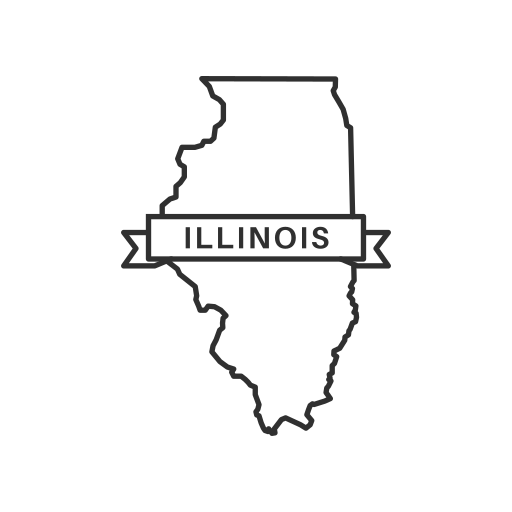Illinois Child Abuse Statistics 2023: Facts about Child Abuse in Illinois reflect the current socio-economic condition of the state.

LLCBuddy editorial team did hours of research, collected all important statistics on Illinois Child Abuse, and shared those on this page. Our editorial team proofread these to make the data as accurate as possible. We believe you don’t need to check any other resources on the web for the same. You should get everything here only 🙂
Are you planning to start an Illinois LLC business in 2023? Maybe for educational purposes, business research, or personal curiosity, whatever it is – it’s always a good idea to gather more information.
How much of an impact will Illinois Child Abuse Statistics have on your day-to-day? or the day-to-day of your LLC Business? How much does it matter directly or indirectly? You should get answers to all your questions here.
Please read the page carefully and don’t miss any words.
On this page, you’ll learn about the following:
Top Illinois Child Abuse Statistics 2023
☰ Use “CTRL+F” to quickly find statistics. There are total 21 Illinois Child Abuse Statistics on this page 🙂Illinois Child Abuse “Latest” Statistics
- Alcohol or drug use is a factor in at least 40% of instances of child maltreatment and can sometimes cause 75% of all cases.[1]
- Out of the 20% of calls made by education employees to the child abuse hotlines, only 11% of the calls were ultimately 122 Illinois children who died in 2021 from abuse and neglect despite interaction with DCFS, according to the inspector general’s report.[2]
- Due to the large number of sexual abuse cases these centers manage, CACS serviced 70% more girls than males and a greater proportion of children aged 7 to 12 (37%), 13 to 17, and younger children (32%).[3]
- Court monitors discovered that more departures were still insufficient to counterbalance the 17% increase in foster care entry and that too many children continue to linger in the system for far too long.[4]
- Researchers found that 40% of Illinois children between the ages of 1 and 17 had at least one unfavorable childhood event, such as child abuse, child neglect, or exposure to domestic violence.[3]
- A study provided to a federal court under an ongoing consent decree revealed that black children made up just approximately 16% of the total children population in 2020, but 39.5% of children who entered foster care.[4]
- 23% are indicated on the 109,184 reports of child abuse and neglect, and 28% were reported to DCFS for the 7,426 cases of child sexual abuse in 2015.[3]
- A research found that Illinois’s incidence of child abuse-related deaths in 2016 which is 216 per 100,000 children—was actually a little lower than the national average of 23.6 per 100,000 children.[5]
- Up until 2016, Illinois reported rates of child abuse and neglect and child sexual abuse were stable. However, in 2016, those rates jumped by 16% and 14%, respectively.[3]
- Of the 9,532 children served by a CAC in Illinois, 873 of them were instances of sexual abuse, which is higher than there were occurrences of sexual abuse reported to DCFS in 2015.[3]
- Over 4% of the documented 100,000 incidents of child abuse or neglect in the state of Illinois alone occurred in Winnebago County.[7]
- According to a crime victim from Illinois, 20% of crime victims suffered child physical abuse and 20% from child sexual abuse.[3]
- Among those who had been abused physically as children or those who had suffered child sexual abuse, 31% said this event had the most influence on them. 58 % said they would choose this experience.[3]
- The data from cwoutcomes.acf.hhs.gov shows that 0.69% of children were maltreated while in foster care from 2016 – 2020 in Illinois.[8]
- The data from cwoutcomes.acf.hhs.gov shows that 12.24% of children experience a recurrence of child abuse or neglect from 2016 – 2020.[8]
- According to InfoNet statistics, 77% of the 42,531 adult victims were parents with more than 68,000 minor children.[3]
Illinois Child Abuse “Abuse” Statistics
- Neglect is typically the most prevalent type of abuse, which was recorded in more than 60% of calls made countrywide in 2018.[6]
Illinois Child Abuse “Other” Statistics
- A nationwide assessment of bad behaviors among young people performed by the Center for Disease Control revealed that 17% of Illinois high school students have experienced cyberbullying and 21% have experienced being bullied.[3]
- According to federal statistics, Illinois had 5,328 young people leave foster care in 2020, more than 13% from 2019.[4]
- Approximately 1181,60 domestic crimes and approximately 4,765 sexual assaults were reported to law enforcement in 2016, according to ISP statistics.[3]
- According to research, 47% of boys and 36% of girls from violent households show clinically significant behavioral issues.[1]
Also Read
- Alaska Child Abuse Statistics
- Arizona Child Abuse Statistics
- Arkansas Child Abuse Statistics
- California Child Abuse Statistics
- Colorado Child Abuse Statistics
- Connecticut Child Abuse Statistics
- Florida Child Abuse Statistics
- Georgia Child Abuse Statistics
- Illinois Child Abuse Statistics
- Indiana Child Abuse Statistics
- Iowa Child Abuse Statistics
- Kansas Child Abuse Statistics
- Kentucky Child Abuse Statistics
- Louisiana Child Abuse Statistics
- Maine Child Abuse Statistics
- Maryland Child Abuse Statistics
- Michigan Child Abuse Statistics
- Minnesota Child Abuse Statistics
- Montana Child Abuse Statistics
- Nebraska Child Abuse Statistics
- Nevada Child Abuse Statistics
- New Hampshire Child Abuse Statistics
- New Jersey Child Abuse Statistics
- New York Child Abuse Statistics
- North Dakota Child Abuse Statistics
- Ohio Child Abuse Statistics
- Oregon Child Abuse Statistics
- Rhode Island Child Abuse Statistics
- South Carolina Child Abuse Statistics
- South Dakota Child Abuse Statistics
- Tennessee Child Abuse Statistics
- Texas Child Abuse Statistics
- Utah Child Abuse Statistics
- Vermont Child Abuse Statistics
- Virginia Child Abuse Statistics
- Washington Child Abuse Statistics
- West Virginia Child Abuse Statistics
- District of Columbia Child Abuse Statistics
How Useful is Illinois Child Abuse
Illinois Child Abuse is a vital tool in the fight against child abuse. It serves as a resource for individuals to report suspected instances of abuse and neglect, so that authorities can investigate and intervene when necessary. The hotline provides a way for concerned citizens to take action and ensure that children are safe and protected from harm.
By providing a centralized hotline for reporting child abuse, Illinois Child Abuse helps to ensure that information is promptly and efficiently communicated to the appropriate authorities. This quick response is crucial in situations where a child is in immediate danger or at risk of further harm. Through the hotline, individuals can play a pivotal role in preventing potential tragedies and saving lives.
Additionally, Illinois Child Abuse serves as a preventative measure, deterring potential abusers from harming children. Knowing that there are consequences for abusive behavior can serve as a deterrent and discourage individuals from engaging in harmful practices. By raising awareness about the consequences of child abuse and providing a convenient outlet for reporting concerns, the hotline encourages a culture of protection and accountability.
Illinois Child Abuse also provides support for families in crisis, offering resources and assistance to help address underlying issues that may contribute to abuse or neglect. By connecting families with the services they need, the hotline can help prevent future incidences of abuse and support healthy relationships within households. This proactive approach can break the cycle of abuse and create a safer environment for children to thrive.
While Illinois Child Abuse is undoubtedly a valuable resource in the fight against child abuse, there are always opportunities for improvement. Increased funding and awareness can expand the reach and impact of the hotline, ensuring that more children are protected from harm. Continued collaboration between government agencies, community organizations, and individuals is essential to strengthening our efforts to combat child abuse and provide a safe environment for all children.
It is crucial that we as a society recognize the importance of Illinois Child Abuse and the role it plays in protecting our most vulnerable members. By reporting concerns and raising awareness about the signs of abuse, we can make a difference in the lives of children who are at risk. Together, we can create a safer and more supportive environment for all children to thrive and reach their full potential.
Reference
- state – https://www.dhs.state.il.us/page.aspx?item=38466
- illinoiscasa – https://illinoiscasa.org/who-we-are/illinois-child-welfare-statistics-at-a-glance.html
- illinois – https://icjia.illinois.gov/researchhub/articles/child-and-youth-exposure-to-violence-in-illinois
- imprintnews – https://imprintnews.org/foster-care/illinois-foster-care-numbers-buck-national-trend/62520
- wttw – https://news.wttw.com/2019/05/15/study-illinois-sometimes-brushes-aside-child-abuse-allegations
- chicagomaroon – https://chicagomaroon.com/article/2021/4/6/illinois-child-welfare-system-stress-confronting-covid-19/
- rrstar – https://www.rrstar.com/story/opinion/2022/04/23/100-k-children-were-reported-abuse-neglect-victims-illinois-2020/7417185001/
- hhs – https://cwoutcomes.acf.hhs.gov/cwodatasite/pdf/illinois.html
